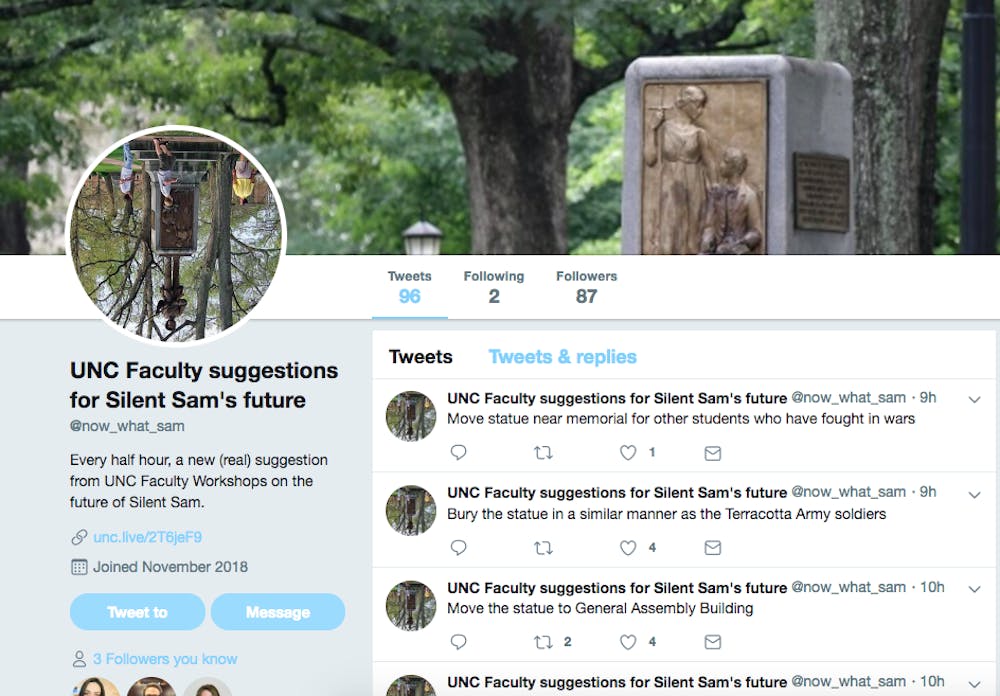For the past few months at UNC, students, faculty, alumni and citizens have formulated ideas about the unknown fate of Silent Sam, the Confederate statue that was forcibly removed by protesters in late August.
Chancellor Carol Folt sent an email on Nov. 9 notifying the community about her and the Board of Trustees receiving an extension from the Board of Governors on their deadline to give a recommendation on what to do with the monument. She also touched on some of their efforts to involve faculty, staff and students, attaching a summary of the work of the Office of Faculty Governance and the Faculty Executive Committee. The report contained ideas created by faculty in the 11 workshops the committees held Oct. 3-10.
Graduate Emma Parker — who received both her undergraduate and master's degrees from UNC — began reading through the summary of faculty suggestions, finding the responses interesting and ranging from “well-informed and thoughtful” to “eye-rolling-ly impractical.” On Nov. 10, she said she decided to create the Twitter account @now_what_sam, where she started tweeting faculty ideas from the report every 30 minutes to put them in a more accessible space.
“I just thought it was really kind of surprising that I hadn’t seen (the ideas) listed anywhere,” Parker said. “I thought that the faculty went to the trouble to go to sessions or to provide feedback, and someone transcribed all of that and organized it and that it might be interesting to make a Twitter account and just share some of them.”
Parker, who took American studies classes as an undergraduate and worked in the Southern Historical Collection of Wilson Library, said she saw a lot of work on the topics surrounding Silent Sam done by students and faculty.
“They are super engaged in questions of University history and Southern history and race relations and how the University fits into the history of the South and the Civil War, so I felt like it was worth listening to what faculty and students had to say,” Parker said.



